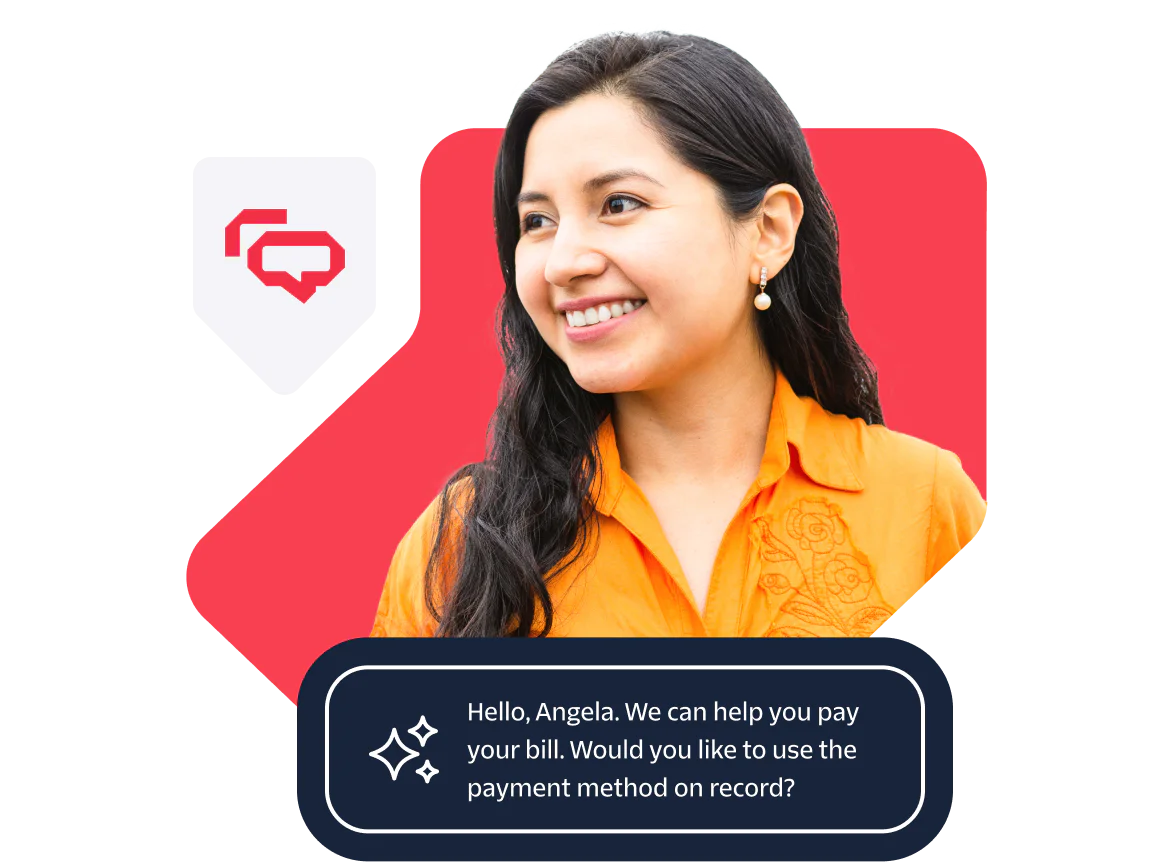Report
2025 Customer Engagement Trends


Top trends and expert advice for building better customer connections
We made it—2024 is in the rearview mirror, and 2025 is full of possibilities. As we enter the new year, it’s the perfect time to explore what’s next for customer engagement.
From AI breakthroughs and rising privacy expectations to the growing demand for hyper-personalization, several key trends are shaping the future. We may not have a crystal ball, but one thing is certain: businesses that embrace these shifts will be well positioned to stand out, forge stronger customer connections, and thrive in the year ahead.
Let’s dive into the five trends that we predict will define customer engagement in 2025 and beyond.


Trend #1
AI-powered conversations that feel human
In 2024, many businesses, driven by the fear of falling behind, rushed to adopt AI solutions such as chatbots and Interactive Voice Response (IVR) systems. However, these hastily implemented technologies often failed to meet customer expectations, lacking the depth and nuance required for helpful, meaningful engagement.
Looking ahead to 2025, businesses are expected to shift their focus to refining their AI strategies by developing solutions that not only learn from every customer interaction but also prioritize empathy and deliver personalized experiences at scale.
Advancements in natural language processing (NLP) and customer sentiment analysis are at the forefront of this transformation, enabling AI-powered tools to move beyond transactional responses to anticipate customer needs and adapt in real-time. By integrating AI with robust customer data ecosystems, businesses can deliver interactions that feel intuitively human while maintaining the speed and precision of automation. These innovations promise not only smoother customer interactions, but also stronger brand loyalty and measurable improvements to retention, satisfaction, and conversion rates.
How Universidad Uk delivers better customer service with AI
Online university Universidad Uk partnered with Twilio Flex to enhance and scale its personalized support for prospective and current students. With its AI-powered tools, Twilio Flex equips Uk agents with the information they need to deliver tailored experiences and enables 24/7 omnichannel customer service through platforms like WhatsApp, SMS, and Programmable Voice.
deflection rate via virtual agents
reduction in average handle time
inquiries from students resolved by chatbot
Trend #2
The age of personalization is here to stay
In 2025, hyper-personalization isn’t optional. It’s a necessity for winning over modern customers.
In fact, Twilio research found that while 84% of businesses said they provide ‘good’ or ‘excellent’ personalized customer engagement, only 54% of consumers agree. To close this gap, businesses are reevaluating their approach to data. Challenges like siloed systems, outdated technology, and inconsistent data quality continue to hinder their ability to deliver meaningful personalization.




of business leaders agree AI will change personalization and marketing stategies
This year, we anticipate a shift toward improved data hygiene and unified ecosystems. By breaking down silos and investing in modern data infrastructure—like customer data platforms—businesses can create unified customer profiles. These are comprehensive, accurate, and actionable data sets that enable real-time, tailored experiences across every customer touchpoint. For customers, this means more relevant and seamless brand interactions that feel truly personalized to their needs and preferences.


"Everyone wants real-time personalization. What that means is the data has to be real-time collected, real-time processed, and real-time curated to then be activated on in real-time. It’s about how contextually relevant the message is being returned to the customer from the brand."
Trend #3
The privacy-personalization balancing act
Consumers increasingly expect personalization but demand privacy, requiring a delicate balancing act for businesses. Ethical data collection and usage have shifted from being optional to becoming non-negotiable for privacy-conscious customers.
While Google shows no immediate plans to phase out third-party cookies in Chrome, we expect more businesses to proactively shift to zero-party and first-party data strategies. This approach not only enables them to deliver more tailored customer experiences but also aligns with evolving privacy expectations and builds greater trust with their audiences—ensuring both compliance and customer satisfaction.


of consumers said they would share their personal information with brands in exchange for more personalized experiences
How Arduino built privacy-first, personalized experiences for its customers
Italian software company Arduino wanted to transform the way it interacts with two key website visitors: “casual browsers” and “ready-to-buy consumers." By partnering with Twilio Segment, Arduino could compliantly predict customers’ shopping intentions based on hundreds of data points across 12 websites, server-side data from Big Query, and various APIs. This helped the company focus their advertising spend exclusively on shoppers that are ready to commit, while providing personalized assistance to those still browsing.
more efficient with engineering resources
increased accuracy of audience segments
time saved adding new data sources
Trend #4
Customer retention: The new growth strategy
Amid tighter budgets and limited resources, many businesses will shift their focus from customer acquisition to customer retention in 2025. Yet, this pivot comes with challenges as brand loyalty is increasingly fragile as inflation continues to strain consumers.
To stand out from the competition, companies are expected to invest more heavily in loyalty programs that deliver personalized rewards and incentives to keep consumers coming back for more. By aligning rewards with individual preferences and delivering targeted deals at just the right time, brands can build deeper customer connections, boost lifetime value, and drive repeat business, laying the foundation for sustainable, long-term growth.


How Allergan Aesthetics drove $400 million in revenue with its new loyalty program
To grow its direct-to-consumer business and relaunch its Allē customer loyalty program, global pharmaceutical company Allergan partnered with Twilio to unify customer data, build precise user profiles, and deliver timely, personalized text messages to program members. By leveraging Twilio’s capabilities, Allergan engages customers in more meaningful and impactful ways, strengthening relationships and driving over $400 million in sales.
Allē loyalty users
Allē App Store
yearly sales driven
Trend #5
A shift toward scalable, flexible solutions
Technology’s recent rapid growth has introduced countless tools to the market, revolutionizing how businesses operate. However, this surge of solutions has also brought unique challenges, such as fragmented systems and siloed data, which often hinder companies from achieving their primary goal: delivering better, more personalized customer experiences.
To overcome these hurdles, businesses need real-time contextual data, AI-driven insights, and seamless integration across communication channels. Without these, it’s impossible to create unified customer profiles or deliver the kind of experiences modern customers expect. That’s why we expect businesses will move away from rigid, all-in-one solutions that limit flexibility.
Instead, they’ll seek software that integrates seamlessly with their existing tech stacks, enabling them to sync data across platforms, unify customer profiles, and leverage AI to unlock meaningful, real-time insights. By prioritizing flexible, connected systems, businesses can unlock the full potential of their data and build personalized, scalable experiences that drive lasting growth.



"We believe that brands should have the flexibility to choose best-in-class channel solutions for themselves and not spend months building manual point integrations to get their data out of these platforms."
Build smarter customer engagement with Twilio
As customer expectations continue to evolve in 2025, businesses must embrace innovative strategies to stay ahead. By leveraging Twilio’s market-leading software, you can unify your data, deliver personalized experiences, and connect with customers in smarter, more meaningful ways.
Whether it's refining your use of AI, consolidating tools, or prioritizing privacy and personalization, Twilio helps you build seamless, scalable customer engagement that drives loyalty and long-term growth.


Learn why the IDC MarketScape named Twilio a Leader for the CDP Focused on B2C Users
Read to learn more about the Customer Data Platform (CDP) software market and dive into why the IDC MarketScape named Twilio a Leader for the CDP Focused on B2C Users.
Source: "IDC MarketScape: Worldwide Customer Data Platforms Focused on B2C Users Vendor Assessment", By Tapan Patel and Gerry Murray. December 2024, Doc. #US51778724

